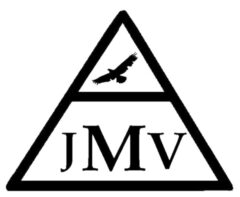Adrián Gallardo, Juan Martín Núñez Silveira, Aldana Silvero, Armando Diaz
Cite
Gallardo A, Núñez J, Silvero A, Diaz A. Potential beneficial patient-ventilator dyssynchrony: is it possible? J Mech Vent 2024; 5(3):104-107.
Abstract
Patient-ventilator dyssynchronies are entities commonly observed during mechanical ventilation. Their persistence can be injurious to lung tissue and the diaphragm. However, these entities have shown different clinical impacts, with reports of diaphragm function preservation in the presence of reverse trigger. Therefore, we hypothesize the existence of a potentially beneficial dyssynchrony.
Keywords: Dyssynchronies, Reverse trigger
References
| 1. Wunsch H, Linde-Zwirble WT, Angus DC, et al. The epidemiology of mechanical ventilation use in the United States. Crit Care Med 2010; 38(10):1947-1953. https://doi.org/10.1097/CCM.0b013e3181ef4460 PMid:20639743 | |||
| 2. Bruni A, Garofalo E, Pelaia C, et al. Patient-ventilator asynchrony in adult critically ill patients. Minerva Anestesiol 2019; 85(6):676-688. https://doi.org/10.23736/S0375-9393.19.13436-0 PMid:30762325 | |||
| 3. Damiani LF, Engelberts D, Bastia L, et al. Impact of reverse triggering dyssynchrony during lung-protective ventilation on diaphragm function: an experimental model. Am J Respir Crit Care Med 2022; 205(6):663-673. https://doi.org/10.1164/rccm.202105-1089OC PMid:34941477 | |||
| 4. Telias I, Madorno M, Pham T, et al. Magnitude of synchronous and dyssynchronous inspiratory efforts during mechanical ventilation: a novel method. Am J Respir Crit Care Med 2023; 207(9):1239-1243. https://doi.org/10.1164/rccm.202211-2086LE PMid:36848505 PMCid:PMC10161749 | |||
| 5. Dres M, Goligher EC, Heunks LMA, et al. Critical illness associated diaphragm weakness. Intensive Care Med 2017; 43(10):1441-1452. https://doi.org/10.1007/s00134-017-4928-4 PMid:28917004 | |||
| 6. Vaporidi K, Akoumianaki E, Telias I, et al. Respiratory drive in critically ill patients. Pathophysiology and clinical implications. Am J Respir Crit Care Med 2020; 201(1):20-32. https://doi.org/10.1164/rccm.201903-0596SO PMid:31437406 | |||
| 7. Goligher EC, Jonkman AH, Dianti J, et al. Clinical strategies for implementing lung and diaphragm-protective ventilation: avoiding insufficient and excessive effort. Intensive Care Med 2020; 46(12):2314-2326. https://doi.org/10.1007/s00134-020-06288-9 PMid:33140181 PMCid:PMC7605467 | |||
| 8. Telias I, Beitler JR. Reverse triggering, the rhythm dyssynchrony: potential implications for lung and diaphragm protection. Am J Respir Crit Care Med 2021; 203(1):5-6. https://doi.org/10.1164/rccm.202008-3172ED PMid:32841572 PMCid:PMC7781145 | |||
| 9. Goligher EC, Dres M, Fan E, et al. Mechanical ventilation-induced diaphragm atrophy strongly impacts clinical outcomes. Am J Respir Crit Care Med 2018; 197(2):204-213. https://doi.org/10.1164/rccm.201703-0536OC PMid:28930478 | |||
| 10. Jansen D, Jonkman AH, Vries HJ, et al. Positive end-expiratory pressure affects geometry and function of the human diaphragm. J Appl Physiol 2021; 131(4):1328-1339. https://doi.org/10.1152/japplphysiol.00184.2021 PMid:34473571 | |||
| 11. Dianti J, Fard S, Wong J, et al. Strategies for lung- and diaphragm-protective ventilation in acute hypoxemic respiratory failure: a physiological trial. Crit Care 2022; 26(1):259. https://doi.org/10.1186/s13054-022-04123-9 PMid:36038890 PMCid:PMC9422941 | |||
| 12. García-Valdés P, Fernández T, Jalil Y, et al. Eccentric contractions of the diaphragm during mechanical ventilation. Respir Care 2023; 68(12):1757-1762. https://doi.org/10.4187/respcare.11040 PMid:37402586 | |||
| 13. Coifard B, Dianti J, Telias I, et al. Dyssynchronous diaphragm contractions impair diaphragm function in mechanically ventilated patients. Crit Care 2024; 28(1):107. https://doi.org/10.1186/s13054-024-04894-3 PMid:38566126 PMCid:PMC10988824 | |||
| 14. Sousa MLA, Magrans R, Hayashi FK, et al. Predictors of asynchronies during assisted ventilation and its impact on clinical outcomes: The EPISYNC cohort study. J Crit Care 2020; 57:30-35. https://doi.org/10.1016/j.jcrc.2020.01.023 PMid:32032901 | |||
| 15. Knelson JH, Howatt WF, DeMuth GR (1970). Effect of respiratory pattern on alveolar gas exchange. Journal of applied physiology 1970; 29(3):328-331. https://doi.org/10.1152/jappl.1970.29.3.328 PMid:5451309 | |||
| 16. Mellado Artigas R, Damiani LF, Piraino T, et al Reverse triggering dyssynchrony 24 h after initiation of mechanical ventilation. Anesthesiology 2021; 134(5):760-769. https://doi.org/10.1097/ALN.0000000000003726 PMid:33662121 | |||
| 17. Gea J, Zhu E, Gáldiz JB, et al. Consecuencias de las contracciones excéntricas del diafragma sobre su función [Functional consequences of eccentric contractions of the diaphragm]. Arch Bronconeumol 2009; 45(2):68-74. https://doi.org/10.1016/j.arbres.2008.04.003 PMid:19232267 | |||
| 18. Pham T, Montanya J, Telias I, et al. Automated detection and quantification of reverse triggering effort under mechanical ventilation. Crit Care 2021; 25:60. https://doi.org/10.1186/s13054-020-03387-3 PMid:33588912 PMCid:PMC7883535 | |||
| 19. Pelosi P, Goldner M, McKibben A, et al. Recruitment and derecruitment during acute respiratory failure: an experimental study. Am J Respir Crit Care Med 2001; 164(1):122-130. https://doi.org/10.1164/ajrccm.164.1.2007010 PMid:11435250 | |||
| 20. Vaporidi K, Soundoulounaki S, Papadakis E, et al. Esophageal and transdiaphragmatic pressure swings as indices of inspiratory effort. Respir Physiol Neurobiol 2021; 284:103561. https://doi.org/10.1016/j.resp.2020.103561 PMid:33035709 | |||
| 21. Baedorf Kassis E, Su HK, Graham AR, et al. Reverse trigger phenotypes in acute respiratory distress syndrome. Am J Respir Crit Care Med 2021; 203(1):67-77. https://doi.org/10.1164/rccm.201907-1427OC PMid:32809842 PMCid:PMC7781129 |
